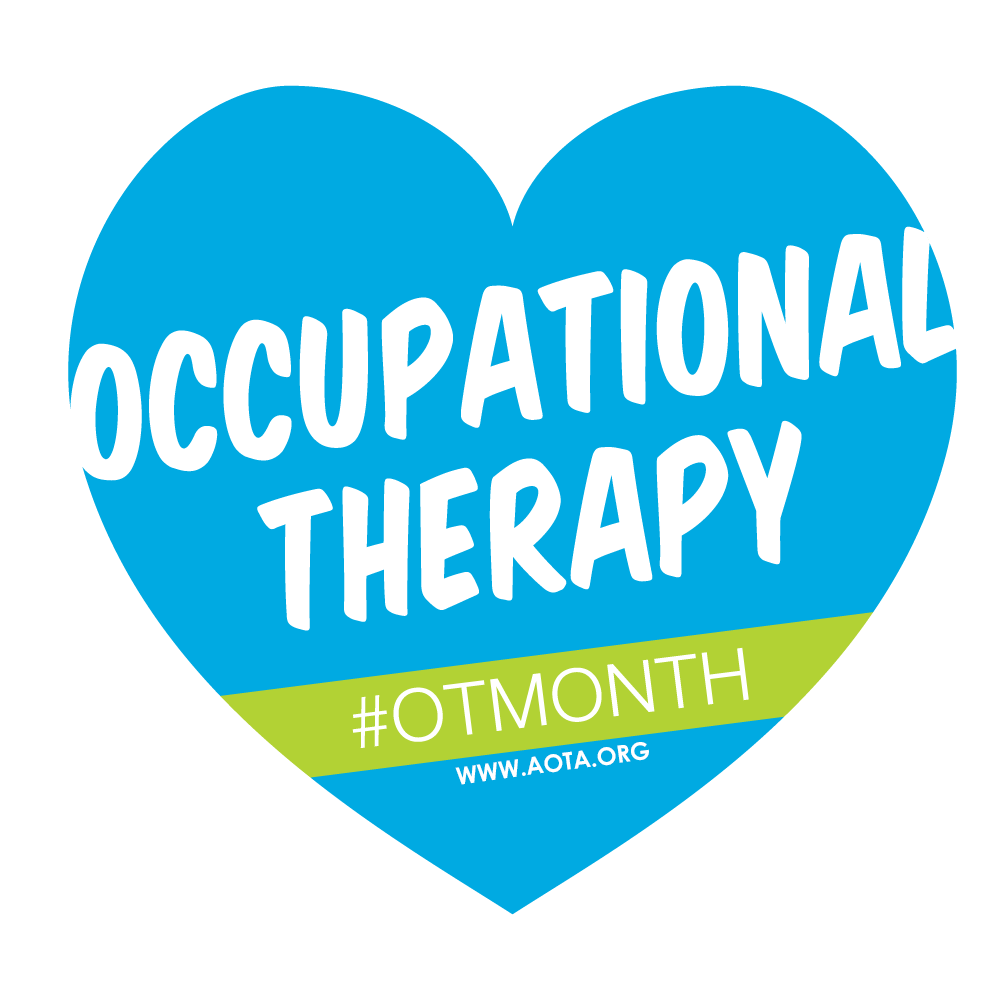April is Occupational Therapy Month! Happy OT Month to all of the amazing occupational therapists out there!
As therapists, we encounter a lifetime of learning. We cannot possibly learn everything we need to know for our careers in a 2-3 year Master’s degree program. Being a speech-language pathologist, I have learned so much not only from other
In honor of OT Month, I’m happy to share some great lessons I have learned from some amazing OTs over the years.
What Is An Occupational Therapist?
OTs will joke around that nobody understands what they do. When you tell a patient you are an OT they respond and say, “I don’t need help getting a job.” While I always had a basic understanding of what an OT is, I have learned so much about their scope of practice over the years. I am constantly impressed by the knowledge and
When I started my career, I honestly don’t know if I truly understood the depth of occupational therapy.
I remember naively asking at rounds what the difference was between PT and OT. In my mind, OT worked with the upper body and ADLs and PT did the lower body and walking.
Truly, OT is far more complex than “working with the upper body” or “doing ADLs.” This definition is taken from the aota.org website and is a beautiful description of OT:
Occupational therapy is the only profession that helps people across the lifespan to do the things they want and need to do through the therapeutic use of daily activities (occupations). Occupational therapy practitioners enable people of all ages to live life to its fullest by helping them promote health, and prevent—or live better with—injury, illness, or disability.
In short, I learned that OTs are masters of understanding and implementing goals to address the whole needs of the patient. They combine mobility, safe cognitive functioning, and an understanding of the needs and wants of the patients to develop their plans of care.
So much of how I function as a therapist has been modeled by OTs.
I love being able to observe their sessions and co-treat with them.
How To Use Adaptive Equipment
In the early years of my career, I worked in a lot of skilled nursing facilities (SNFs) that had many patients who needed training to use adaptive equipment. Equipment such as shoe horns, walkers, sock aides, and reachers were critical for the patient’s safe return home.
I also often got cognitive referrals for patients with cognitive-linguistic deficits who could not sequence the steps needed to use the adaptive equipment.
What I soon realized was that I truly didn’t know the steps well enough to teach another person. Therefore, I had a sit down meeting with some of the OTs on staff to teach me the steps on how to use the different adaptive pieces of equipment found in SNFs.
I took notes, made patient handouts, and was able to integrate functional sequencing goals into my cognitive treatment. The info that I learned helped me to improve functional outcomes for the patients.
The Safe Way To Cook
I am by no means a cook. My idea of “cooking” is light meal prep, such as throwing lettuce and chicken in a bowl and calling it a salad. If you put me in a kitchen, I’m a mess. I may or may not use a cutting board, have a million different items going at once, and am by no means the definition of safety.
At my first job out of school, I had a lot of patients with mild cognitive-linguistic deficits.
Many of these patients had functional goals to prepare food at home. Similar to the adaptive equipment, I found myself in no position to be teaching people how to safely navigate a kitchen, when I myself could barely cut an avocado without nicking my finger.
Thanks to the occupational therapists in my department, I was able to learn the most important safety techniques to teach patients in the kitchen. I also transferred this knowledge to myself and am now safer and more mindful in the kitchen.
How To Get Creative With Materials
Occupational therapists tend to be very creative and innovative by nature. I’ve met so many OTs who can take literally anything and turn it into a therapy material.
As a novice clinician in the medical setting, I struggled to find materials to address cognitive goals with adults. I learned SO MUCH from occupational therapists and took so many great ideas from them.
I learned that using 25-piece puzzles (and you can buy very adult-friendly animal puzzles), is great for visuospatial and problem-solving goals for a short session.
Also, an occupational therapist taught me that a deck of cards can be used to address just about any goal. Side note: Check out this blog to learn more about using a deck of cards in treatment.
Also, I learned that a newspaper has endless opportunities to address reading comprehension and problem-solving goals.
If you are
Occupational therapists are such a vital part of the therapy team!
It’s been a pleasure to work alongside so many amazing OTs. I have seen myself learn and grow as a clinician from them. OTs have a wide range of information and education that makes them such a value to the therapy team.
Thank
Feature Photo credit:https://www.aota.org/
Free E-Book & Newsletter
Subscribe to get our latest content and stay up to date by email

